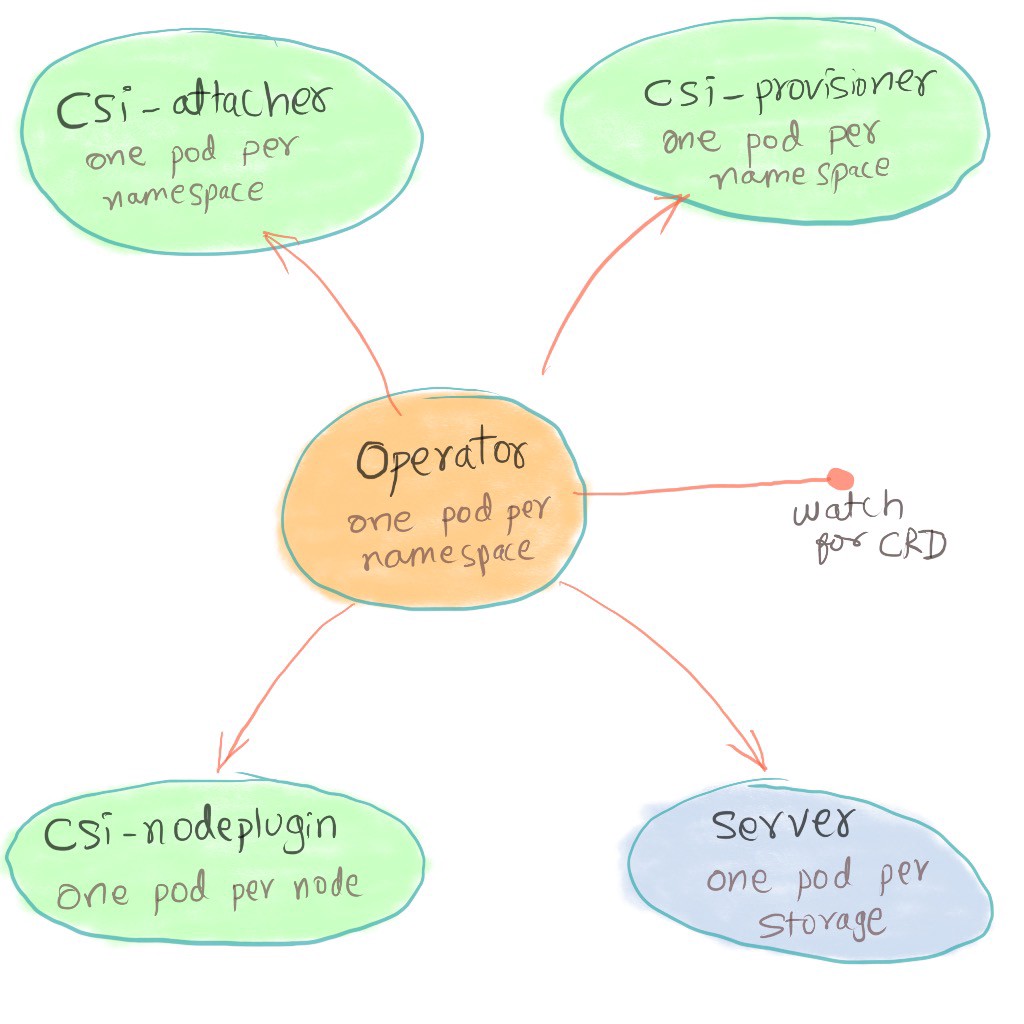kaDalu — Ocean of potential in k8s storage
6 minutes read.
It has been more than 3 years since Kubernetes (k8s) picked up exponential growth. Now, almost every software company and every product are trying to latch on to this phenomena and expand. While such stupendous growth is a nice thing, it is not without its unique challenges.
k8s and storage:
While process (CPU), network management has completely moved to cattle mode in k8s, storage is not virtualized enough to become a cattle mode candidate. By migrating storage management to CSI (Container Storage Interface) and introducing concepts of PV (PersistentVolume) and PVC (PersistentVolumeClaim), k8s now has made it possible for storage vendors to provide viable solutions. But, it is not easy!
Let me explain why;
-
While network and CPU can stay ephemeral and invoked only when there is a need for ‘execution’, data needs to be persisted — stored and retrieved even when processes are not invoked.
-
To "store" data, one needs to access physical storage media, somewhere.
This is the main reason why object storage made sense (mainly because it can be accessed with a simple URL, can be hosted outside the cluster somewhere in the cloud). But this is most efficient for immutable data only. Applications are still written to work on top of file-systems, which directly or indirectly sits on top of block storage. Then the question is, what do we do till then?
Gluster and k8s — story
Gluster, being a SDS (Software Defined Storage), has all the ingredients to make storage more cattle mode like, but lacks a good management layer based on APIs (or call it REST APIs). The existing implementation made the solution bulkier than required. Gluster used the “heketi project” as an external entity to help in k8s world. Even though the whole stack could be containerized and managed within k8s, the overall complexity of the solution made its adoption very difficult.
The “Rook project” which started as a ‘storage operator’ for k8s early on, picked Ceph as the storage engine. Rook did a good job of making ‘management’ easy for admins using k8s. Currently, many projects have ported their plugins to Rook. And Rook is growing in popularity with Ceph as the focus.
In the mean time, Gluster tried to productize its long pending GD2 (which was intended to have embedded REST API). For those who doesn’t know what is gd2, it means v2.0 (or new way) of glusterd, which is the management layer of Gluster. There was a plan of bringing together different Gluster projects under a single umbrella to provide a comprehensive “container storage solution”, called as GCS (Gluster Container Storage) or GlusterCS. This isn’t finished and has too many dependencies to call it production ready as yet. As per my understanding on contributions are made to these projects in last 4 months or so.
The “gluster-subvol” approach which was also attempted didn’t get much attention though. However, it did solve a major problem of scale of PVs in k8s. This was not tagged as a generic solution for k8s. Also, gluster community didn’t perceive this as a generic solution.
I should say, this is not yet a ‘Gluster community’ project, mainly as it changes the way Gluster is managed, and perceived in last 10 years.
Introduction to kaDalu
This was the time when the proposal for a light-weight service that would provide a comprehensive solution, came through. I wrote about it earlier here in my blog. Once we started prototyping, we called the project as ‘kaDalu’ (ಕಡಲು), which means Ocean.
We talked about this at today’s DevConf.IN. You can find the slides for our presentation here, and the demo of our simple two steps install can be found @ https://asciinema.org/a/259949

kaDalu is the operator which provisions the gluster storage as containers, and manages everything related to GlusterFS, so that k8s users can get PV/PVC requests done through CSI. As it is developed for higher versions of k8s where CSI is supported (1.14.+), kaDalu choose to be an independent operator, instead of a sub-operator under rook project. kadalu is choosen to be very light weight, so there is no duplicate layers.
One other main solution we wanted to provide with kaDalu project is helping users (and companies) having traditional storage array, or any other existing highly available storage, which they want to expose in k8s. With kadalu, it becomes very easy. All operator and CSI responsibilities are taken care by kaDalu project, and all you have to do is, expose the storage in one of the nodes of k8s, and provide storage config file to k8s.
One other main solution we wanted to provide with kaDalu project is helping users (and companies) having traditional storage array, or any other existing highly available storage, which they want to expose in k8s
We invite you to try out the project, steps to try and install the operator are in its github page.
I should say, this is not yet a ‘Gluster community’ project, mainly as it changes the way Gluster is managed, and perceived in last 10 years. If there are enough users trying it out, and liking the project we can call it a community project. Right now, this is still Aravinda’s and my pet project. Do give a github star if you like it, so we know you like it. We also don’t mind you tweeting and blogging about it :-)
